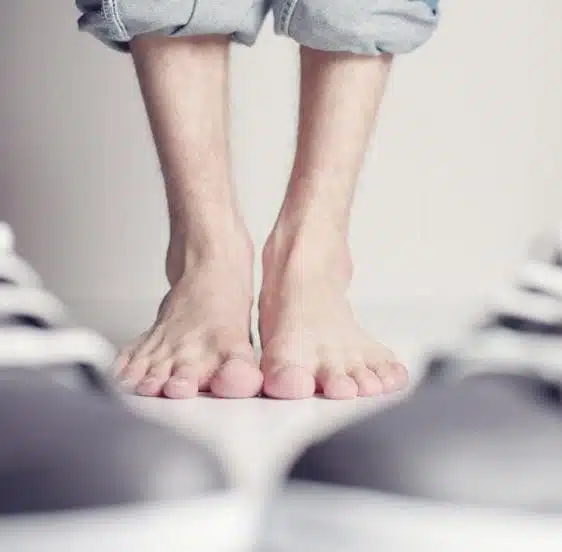Foot Care for Seniors
Posted in Foot care for seniors
New Yorkers don’t need to participate in a marathon to put their feet through some serious paces over the course of their lifetimes. As residents of a “walking city,” our ability to comfortably travel on foot can play a major role in preserving our long-term independence as we age.
In this week’s blog, we will discuss simple guidelines you can follow to preserve the health of your feet well into your senior years.
How aging impacts our feet
We put a lot of mileage on our feet over the course of a lifetime, and that wear and tear adds up. Cushioning pads on the soles of feet become thinner over the years, making feet more susceptible to general discomfort when standing or walking for long periods of time and can ultimately change an individual’s gait, leading to increased unsteadiness and a heightened risk of falls.
Additionally, the foot’s skin and toenails often becomes dryer as we age, increasing the likelihood of breaks in the skin and cracked nails. These small wounds can take much longer to heal if an older individual has poor circulation to their feet due to diabetes, tobacco use and other conditions.
Tips for preserving foot health
1 – Wear comfortable shoes. The vast majority of foot-related injuries are caused by people wearing ill-fitting shoes that pinch, rub or otherwise abrade the wearer’s foot, causing painful bunions, corns and calluses.
Remember that our feet continue to grow throughout our lives, so taking a little extra time at the shoe store to try a few different sizes can go a long way towards promoting long-term foot health. If your shoes need a little “breaking in,” consider applying moleskin pads to tight points on the shoe to minimize discomfort.
Try to go shoe shopping later in the day – feet swell the more we walk, so late-day sizings will be more accurate than those taken in the morning.
2 – Regularly monitor your feet. Try to closely inspect your feet at least once a week, preferably after bathing. Be sure to check not only the bottom and tops of your feet, but between your toes as well.
When inspecting your feet, check for redness, swelling, breaks in the skin or any other change in the condition of your feet.
If you notice anything out of the ordinary, monitor the situation closely and seek medical advice if the issue does not show early signs of healing one day after discovery.
3 – Improve circulation to your feet. A healthy flow of blood to the feet is critical to their long-term health and allows them to repair minor damage and fend off infections and bacteria more effectively.
To improve circulation to your feet, avoid wearing tight-fitting socks and shoes and avoid sitting, especially cross-legged, for lengthy periods of time.
If you plan on sitting for an extended period of time, try to get up every half an hour and walk around for a minute or two to promote healthy circulation to your feet.
4 – Clean feet are happy feet. Bacteria and foot fungus like dark, warm and wet environments – like the inside of a pair of shoes.
To avoid developing serious skin conditions on your feet, try to thoroughly wash and dry your feet at least twice a day with warm water and soap. Be sure to gently scrub between toes and make sure to gently pat the feet dry.
Once washed and dried, be sure to immediately put on clean socks and shoes to avoid injuring your feet and provide good traction while walking around your home.
5 – Seek professional help from a podiatrist. If you notice any pain, swelling, itching, discoloration or any other change in the condition of your feet, it is strongly recommended that you consult with a podiatrist for guidance and treatment.
While some pedicurists might offer assistance with unusual foot conditions, seeking their assistance as a senior is strongly discouraged, as the changing status of your foot health can indicate a more significant change in your overall health that only a trained medical professional can safely diagnose.
SelectCare hopes you found this information useful. Our clients strongly value their independence and preserving the ability to comfortably travel on foot is a critical to this effort.
If you or a loved one struggle to stay ahead of day-to-day errands, attend appointments or simply live the life you once enjoyed, now might be the time to call SelectCare or request a free in-home care guide and learn how our team of home health care experts have helped New Yorkers live happier, healthier lives in their long-time homes for more than 30 years.
